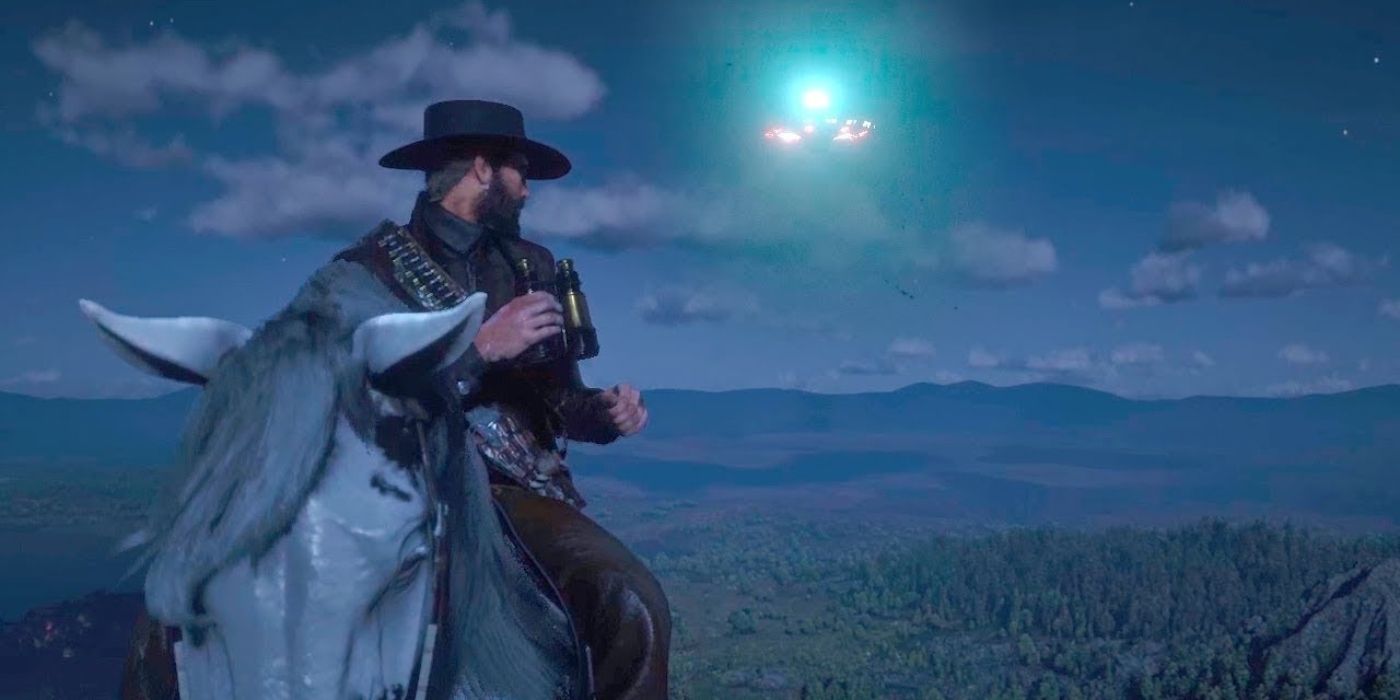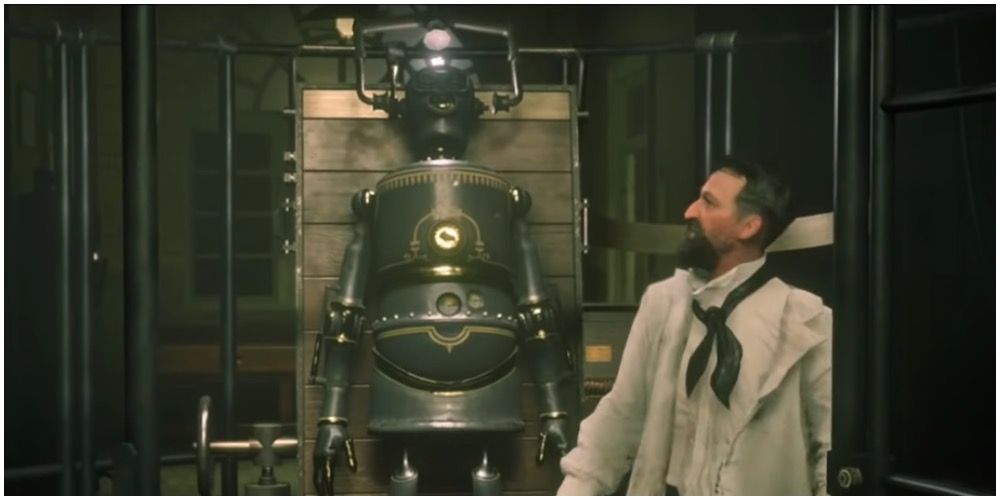Open-World Games Need to Learn from Red Dead Redemption 2's Strangest Quests

The next generation of consoles has arrived, and with it comes a new generation of open-world games fighting to be remembered for creating memorable maps packed with fun side-quests, secrets, and Easter eggs. There’s one game those new competitors could learn a big lesson from, though: Red Dead Redemption 2.
Red Dead Redemption 2’s vast open world is well-known, but there’s one element of Rockstar’s world design that other open-world games could learn a lot from. With it, Rockstar balances its own take on the Wild West with some of the strangest and more genre-defying moments in gaming. As counterintuitive as it may seem, Red Dead 2 manages to find a way to use its strangest moments to make its world feel even more immersive.

Red Dead Redemption 2 may be most famous for creating a huge open-world map for its fictional western frontier, but it isn’t only westerns that Rockstar engages with. Throughout the world of Red Dead 2 players can find places where Rockstar plays with the game's genre, including quests and characters that feel like they're straight out of fantasy, science-fiction, and even horror.
For example, while clearing the grave robbers out of the Saint Denis cemetery players will likely see the ghost of a woman who runs away and disappears behind the headstones. The Saint Denis ghost cannot be shot and is one of the eeriest inclusions in the game, appearing three times throughout the cemetery.
The cemetery mission is one of the main quests in Red Dead 2’s storyline, and must be completed in order to get Jack Marston back from Angelo Bronte as part of the quest "Angelo Bronte, A Man of Honor". While there are other genre-defying moments in Red Dead 2, this one is unique in that it is very hard to avoid while still playing through the main plot. As a result, it helps show how deeply these moments are integrated into the game's canon rather than being throw-away references, despite the ghosts' design being based on the villain from Sam Raimi's Drag Me to Hell.
Some of those other moments include quests like the stranger mission “Geology for Beginners” where the character Francis Sinclair is heavily implied to be a time traveler when he mysteriously disappears at the end of the mission, apparently reappearing as a baby just moments later. His room is filled with drawings that appear to show him visiting different times, and he has the player find rock paintings that seem to show nuclear bombs among other anachronistic elements. Francis is even implied to have something to do with Grand Theft Auto 5’s Epsilon Program, wearing blue like its follows and having a birthmark, a sign to those followers that he is a descendent of Kram, Emperor of the 4th Paradigm.
Another example is the stranger mission “A Bright Bouncing Boy,” where the player character meets a scientist who is attempting to bring a robot to life. When he does so, the robot kills him and can be found elsewhere in the game mourning its monstrous first moments. Even before then, the quest begins rather innocuously with the scientist, Marko Dragic, demonstrating a remote-controlled boat, a reference to Tesla's similar demonstration at Madison Square Garden in 1898. Though a remote control may still seem out of place in 1899 despite its historical accuracy, its inclusion still helps gradually build to the quest's far stranger primary narrative without being too immersion-breaking.
These moments aren’t just some of Red Dead Redemption 2's Easter eggs, though other strange encounters that aren't related to story-driven quests like the vampire of Saint Denis or UFO sighting might be considered more along those lines. The ghost, the time traveler, and the robot are all components of quests with fleshed out stories and dialog that helps them fit seamlessly into the world of Red Dead Redemption 2 despite the fact that they all risk sticking out like a sore thumb in the game's western setting.

While it might seem like these quests would make Red Dead 2 less immersive, for many players the opposite is the case. The inclusion of quests like this helps creates the sense that there is more to the game world than either the player or the player character can understand. This was already explored in the first Red Dead Redemption, where the "Strange Man" John Marston encounters is heavily implied to be God. However, the first game kept most of its strangest encounters isolated in the non-canonical Undead Nightmare DLC, which included everything from zombies to bigfoot and even the four horses of the apocalypse.
In Red Dead Redemption 2 there aren’t so many of these genre-bending moments that the game loses focus of its western roots, and none of them are so extreme that they seem totally out of place. The most outlandish ones like the time traveler quest are very strange, but also come with a degree of ambiguity that leaves them feeling minimally intrusive. Not only that, but the game world is so large and so packed with other missions that developer Rockstar would likely have had to include far more strange quests for the game’s genre to feel significantly shifted.
These strange genre-bending moments work to make the game’s world feel larger and more mysterious. While the player might be versed in the western genre and feel more confident than their player character about the sort of tropes they might encounter, these stranger encounters help put the player in the same baffled shoes as Arthur Morgan or John Marston.
The next generation of open-world RPGs should learn from the way Red Dead Redemption 2 plays with its genre to create game worlds which mess with their genres to become slightly stranger yet more immersive as a result. It's a delicate balancing act to play, and there are likely many Red Dead 2 fans who found some of these moments to be out of place. However, when the balance is struck just right these bizarre interactions help breath new life into the game's well-established western genre.
Red Dead Redemption 2 is available now on PC, PS4, Stadia, and Xbox One.

Post a Comment